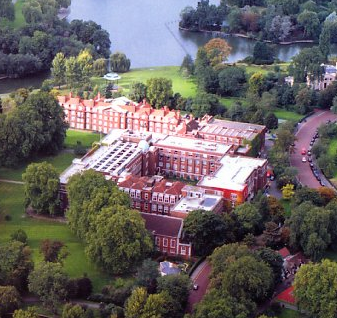Traditional Chinese Diagnosis
In ancient times the Chinese knew that in the summer if the sun was too hot it could cause dehydration, heat-stroke and death And in the winter if it got too cold it could cause hypothermia and death. These elemental forces from above, the Chinese referred to as Heaven, and they could kill a person directly. They could also affect the Earth: the summer sun could cause a drought and the crops would fail and the people would die of starvation, or if the rains were too heavy they could cause flooding which would destroy the harvest and the people would starve. So the ancient Chinese said that Man was affected by Heaven and because the crops in the Earth need sunlight and rain for them to grow so Earth was also dependent on Heaven, and Man was dependent on the food from the Earth. So the ancient Chinese said Heaven, Earth and Man were interconnected and continuously affected by one another, they called this Tao, The Way of Nature.
Tao
The ancients therefore concluded that if a man avoided the extremes of nature and the extremes of his own nature and lived in harmony with Heaven and Earth then his health would be good he would have great longevity and a strong spirit. One of the earliest books that expresses this philosophy is called Huang Di Nei Jing, “The Yellow Emperor’s Classic of Internal Medicine”. The Yellow Emperor lived from 2697 to 2597 B.C. The book contains the philosophy, principles, theories and practical techniques that are the foundation of Traditional Chinese Medicine. It is made clear in the book that the use of diet, movement and breathing exercises, massage, herbal medicine, acupuncture and moxibustion was already widely practised throughout China and had been in use for thousands of years.
Wu Chi
Wu Chi (Wuji) means formlessness and is symbolized by an empty circle. When a person is one with themselves and Nature, there is no duality, only unity, Wu Chi. When a person is balanced within himself it is easier to be in a balanced relationship with others and the world around us. All this is made possible through the balancing of internal energy by invigorating its flow along the Yin and Yang acupuncture meridians, the energy pathways within the body. Tai Chi ( Taiji ) is the name of the Yin Yang diagram. When Yin and Yang are balanced then we can return to Wu Chi.
Tai Chi
One of the central principles of Traditional Chinese Medicine is that for the body to be healthy it must be in a state of dynamic balance. For example too much water in the system will create oedema, too little will create dehydration, too much heat will cause a temperature and too little will cause chill. The Chinese expressed the principle of this dynamic balance in a diagram called Tai Chi which shows two abstract interacting opposites in continual motion. These are known as Yin and Yang. Life is made up of interacting opposites, man and woman, sun and moon, right and left, giving and receiving and positive and negative electricity. Everything in this world exists as a result of an interaction with its opposite. There is in the Yin Yang diagram a small amount of Yin within Yang and a small amount of Yang within Yin. This is because each thing contains the seeds of its opposite in an unending cycle as sure as night follows day.
Chi
Chi (Qi) is the life force energy that flows through the acupuncture meridians. Acupuncture’s ability to cure illness is made possible through the needles’ ability to reinforce or reduce the Chi energy in the Yin and Yang acupuncture meridians (the energy pathways) within the body. When the Chi is balanced and flowing smoothly then the physical body will be in good health.
The Five Elements
The Five Elements theory is a way of communicating the idea that the whole body is interdependent, every internal organ and its associated processes are influencing each other and being influenced by the environmental factors that surround us. These influences can be both supporting and limiting.
Supporting Cycle
Wood burns to produce Fire, Fire creates ash which nourishes the Earth, Earth when mined gives Metal, Metal attracts Water and Water nourishes Wood.
Limiting Cycle
Wood (tree roots) hold together the Earth, Earth (river banks) restrain Water, Water puts out Fire, Fire melts Metal and Metal (axe) cuts Wood.
The table below illustrates some of the main characteristics of the Five Elements.
| Element | WOOD | FIRE | EARTH | METAL | WATER |
| Body organs | Liver & Gall Bladder | P TW Heart & Small Intestine | Spleen & Stomach | Lung & Large Intestine | Kidney & Bladder |
| Yang Emotion | Anger | Hate & Impatience | Worry & Anxiety |
Sadness & Depression | Fear |
| Yin Emotion | Kindness | Love Joy Respect | Fairness & Openness | Uprightness & Courage | Gentleness |
| Expression | Shouting | Laughing | Singing | Weeping | Groaning |
| Season | Spring | Summer | Late Summer | Autumn | Winter |
| Weather | Wind | Heat | Dampness | Dryness | Cold |
| Colour | Green | Red | Yellow | White | Black |
| Cycle | Growing | Fruitful | Ripe Harvest | Seed Falling | Sleeping |
| Time | Infancy | Youth | Adult | Old Age | Death |
| Sense | Eyes | Tongue | Lips & Mouth | Nose | Ears |
| Taste | Sour | Bitter | Sweet | Pungent | Salty |
| Nourishes | Nails & Tendons & Nerves |
Blood & Vessels |
Muscles | Skin & Hair | Bones & Teeth & Pubic Hair |
The connections within the body that are explained in this tables are made possible by the circulation of energy-Chi, essence and blood through the acupuncture meridian system.
Traditional Chinese Diagnosis
The Chinese philosophical concepts mentioned so far like Yin and Yang, the Five elements, the Chi and the Tao all have their concrete medical meaning. They are used to illustrate and explain the complicated and interconnected biological processes that take place in the human body to keep it functioning well, and to understand the mechanism of pathology of disease.
The actual practical methods used when formulating a diagnosis of the patient are,
The Five Methods
Interrogation (asking relevant questions)
Inspection (looking)
Olfaction (smelling)
Auscultation (listening)
Pulse feeling and palpitation
Pulse Diagnosis
Traditional Chinese Pulse Diagnosis is used to identify 28 different factors in the pulses of the radial artery on the wrist. The pulse Rhythm, Tempo, Volume, Energy and Condition are all analysed on Superficial, Moderate and Deep layers.
The Eight Principles
Yang and Yin
External and Internal
Hot and Cold
Excessiveness and Deficiency
The Six Stagnancies
A health problem can also be a result of the stagnation of energy or blood or dampness or heat or food or phlegm.
Tongue Diagnosis
By observing the colour and shape of the tongues substance and the colour and condition of the tongue fur the practitioner can form a diagnosis of the patients health.
Face Diagnosis
By observing the colour and shape of different parts of the face the practitioner can form a diagnosis of the patients health.
Eye Diagnosis
By observing the eyes, pupils, iris and sclera the practitioner can form a diagnosis of the patients health.
Exogenous and Endogenous Pathogens
Extreme emotions, extreme wind, cold, heat, fire, damp and dryness
When the practitioner has found the cause of the condition and clearly identified its symptoms then using ether acupuncture or Chinese Herbal Medicine he can bring them back into balance.
If they are too cold (hypothermia), they can be warmed. If too hot (temperature), they can be cooled. If too weak (malnutrition), they can be nourished etc.
Only with a correct diagnosis can the appropriate treatment be applied which is why at The College Of Chinese Medicine Traditional Chinese Diagnosis is taught to such a high level.

